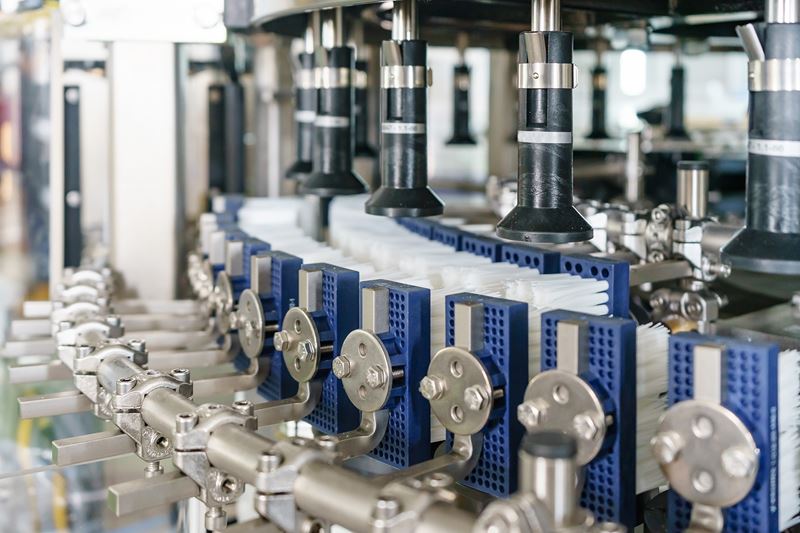Risks to consider for your manufacturing floor upgrade
Risks to consider for your manufacturing floor upgrade
The annual planning cycle is an important time for any manufacturing company. It’s a time to look forward; for outlining strategies to update operations and for investing in facilities and equipment. In years gone by, this planning consisted of mapping expected revenues back to production capabilities and purchasing new equipment to ensure that production rates could continue to meet demand and help grow the company.
Remaining relevant as the consumer landscape evolves and consumer expectations are transformed is a challenge being faced by all manufacturers.
Given the increasingly competitive nature of the marketplace, the capital investment decisions made by manufacturing leaders have never been more significant. Most modern production equipment is enhanced with new technology, digitalization and robotics, and the implementation of such solutions creates an increased emphasis on using data to drive an improved return on investment. Remaining relevant as the consumer landscape evolves and consumer expectations are transformed is a challenge being faced by all manufacturers.
Most end-to-end manufacturing processes are now enabled by computational capabilities linked via digitalization, Internet of Things (IoT), robotics and AI. There’s a tangible shift towards Manufacturing on Demand (MOD), enabled by technologies such as additive manufacturing and real time big data processing. In addition to creating new opportunities, this new production environment creates new risks and interdependencies.
Here, Tina McAvella, VP of Product Manufacturing, Sovereign Insurance, outlines some scenarios that showcase some potential risks that the new wave of technology could create for manufacturers.
- Breakdown and interdependency of various parts of your process: “You’ve expanded the risk inherent in inter-dependent parts of the process,” says McAvella. “This can be within the four walls of a single facility or across locations – and can even be extended to vendors and/or clients.”
- Failed delivery of equipment: “You’re decommissioning old equipment based on an expected delivery date and the new equipment doesn’t materialize. You’re not getting answers from your vendor. What contractual options do you have to resolve a delivery dispute/failure?”
- Decisions made on wrong data: “You’ve moved to a MOD processing model and your inventory is managed based on data received from your clients. You discover that there’s a flaw in a critical report.”
- Security Breach/Ransomware Attack: “You’ve integrated your manufacturing equipment with a reports application that is the subject of a ransomware attack.”
McAvella also advises business leaders to pay close attention to some specific areas.
- Business Continuity Plan: “Keep your plan current,” says McAvella. “As capital investments are made, the business continuity plan should be reassessed to ensure that there’s adequate redundancy in the business model and/or that there’s a strategy to compensate, at least partially, in the event of an outage.”
- Insurance to Value: “The insurance renewal cycle can be a bit of an administrative task that just needs to get done. And let’s face it – you have a business to run!” McAvella says. “That said, the absolute worst thing that can happen following a large loss is that there’s a lack of limits to cover the full extent of a loss. This is bad for you, your broker and your insurer. To avoid an underinsurance situation, the purchase of any piece of new equipment should involve a call to your broker and a discussion about property and business interruption values.”
- Vendor Selection and Management: “Mechanical failure of production equipment has always been a problem but with today’s technology, equipment delivery is now a ‘project’ with all the challenges of an IT system delivery,” says McAvella. “Careful management of a Request for Proposal process and negotiation of the terms and conditions of an order, particularly where there is customization and long delivery times, will help ensure that you’re mitigating the risk of the vendor to deliver on time, on budget and with expected scope/quality.”
“Seeking legal input is advisable to ensure there are clauses in the contract that protect you from the failure and any errors or omissions of your vendor. This is particularly true when dealing with a vendor outside of Canada. Engage a lawyer who understands the market where equipment is being sourced.”
It may seem as though there are a lot of risks to consider, but with the right knowledge and a solid plan, savvy manufacturers can leverage tech innovations to their benefit. Consumer demands are shifting at a rapid pace and manufacturers need to adapt their processes to keep up. Manufacturing on Demand will define the future of the industry - manufacturers just need to make sure they’re a part of that future.


